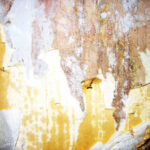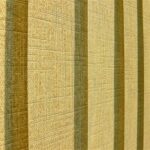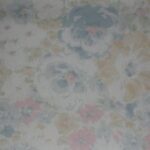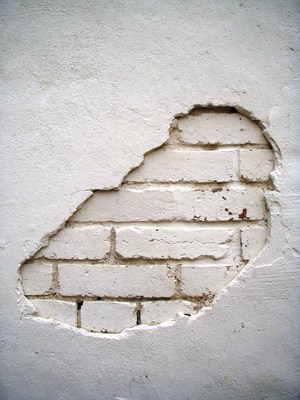By the time I turned 21 years old, I had already purchased my first home and boy was it a learning experience. The home had originally belonged to my grandparents. It was well over 110 years old and had plaster and lath walls that were in desperate need of stripping. Each wall contained layer upon layer of wallpaper, paint, tooth paste and toilet paper. Yes, I said tooth paste and toilet paper. My grandmother had used a mixture of tooth paste and toilet paper to repair holes in the walls during the “lean times” and then just wallpapered over it when times got better. It was just one of the many things that I would discover in my quest to expose the bare walls. Here’s what else I learned:
In my youthful exuberance, I forgot to remove the baseboard and cover the tile floor with newspaper. I later learned that was a big mistake. Both the baseboard and tile had intricate carvings that quickly became encased in bits of old wallpaper. I didn’t think that the old wallpaper adhesive would be so sticky once it was scraped off of the walls. I was so wrong. After scraping down the walls, I had to scrape the baseboards and the floor as well. It took me days to clean up the mess.
2. Vinegar Helps
The second thing that I learned was that vinegar is for more than just pickling eggs and cleaning coffee makers. It also does a heck of a job removing wallpaper and grandma’s homemade joint compound. In addition, it stinks really badly when used in a wallpaper steamer. I sprayed the walls with a 50-50 water vinegar mixture and let it sit like that for a few minutes. Then I put the same mixture into the electric wallpaper steamer that I had purchased from my local home improvement store. It seemed to work better than just plain water. Years later I learned that a mixture of water and fabric softener also helps to remove old wallpaper and it smells so much better.
3. Score the Wallpaper
The third thing that I learned was that scoring the layers of wallpaper before applying the vinegar and water mixture helps to make the task easier. At the time I was afraid to use a perforation tool, so I used an X-Acto knife instead. Even with the knife’s short blade you still have to be careful of how deep you cut into the paper. If you cut too deep you could gouge the walls.
4. Look for a Scraper with Rounded Edges
The fourth thing that I learned about removing wallpaper from plaster walls was to use a wide joint compound knife for the scraping process. I’d suggest that you also look for a knife blade with slightly rounded corners so you don’t accidentally break the plaster with the blade’s sharp edges. Personally, I found that the hardest places to scrape without doing damage to the plaster was around the windows and in the corners. I couldn’t find a blade with rounded edges, so I improvised. I covered the sharp corners of the blade with a bit of duct tape. It helped somewhat.
5. Finish with Plain Water
The fifth thing that I learned while removing wallpaper was that just because the paper is gone, it doesn’t mean that the adhesive has been removed as well. Once the wallpaper was removed, I let the wall dry. After it dried I ran my hands over the walls and realized that there were still traces of adhesive in spots. As such, I had to wipe down the walls with plain water and a sponge. That final wipe down with the sponge removed whatever adhesive was left.
Killeen Gonzalez has a history of completing home improvement projects and has gotten much smarter in her old age.
More from this contributor:
More from this contributor:
5 tips for Decorating Your Home in an Eclectic Style
How to Make Backyard Fish Pond from Scratch
Skater’s Guide to Cleaning Skatepark Concrete
How to Heat Transfer a Design to a Skate Deck





